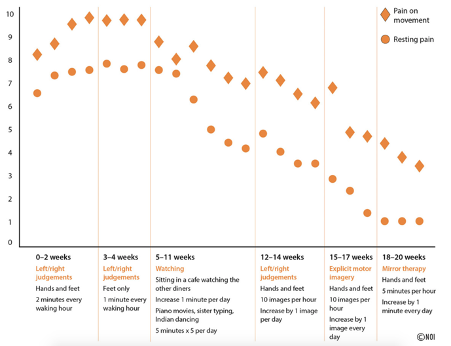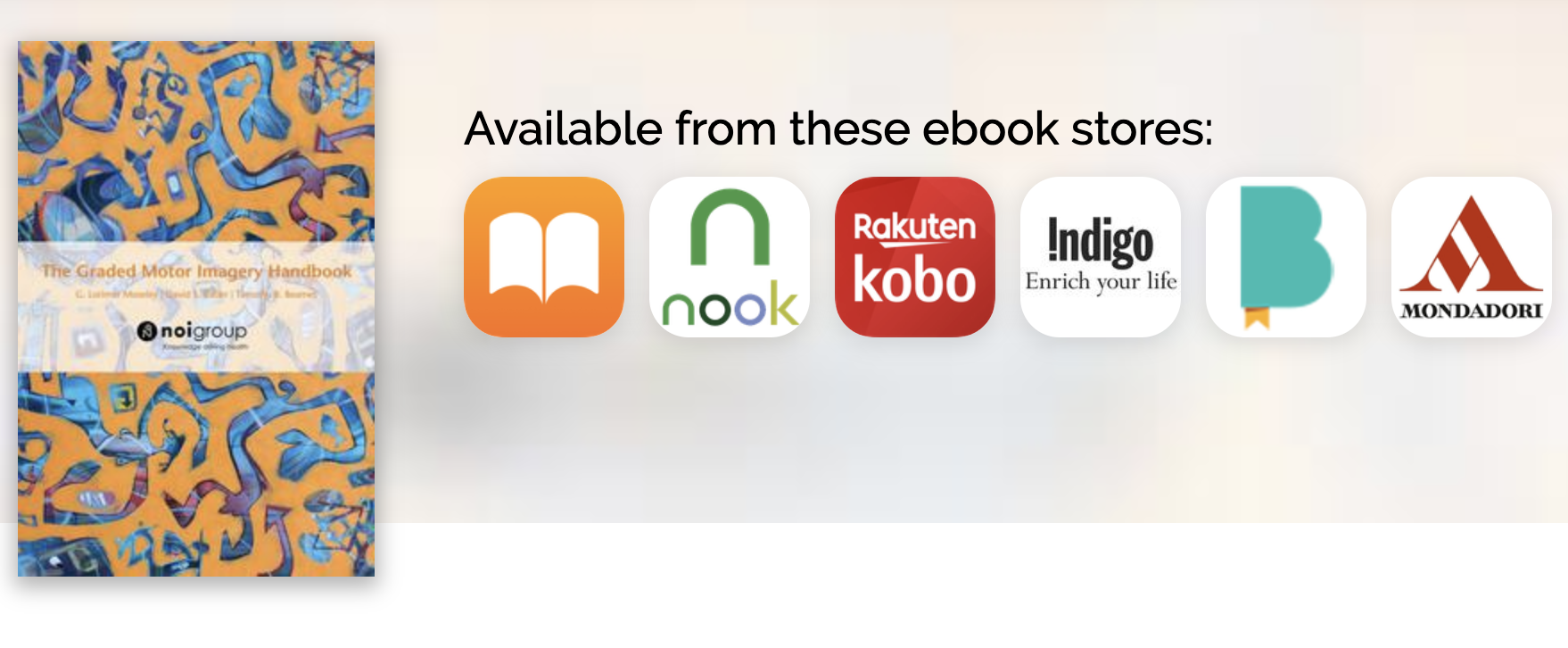Endless opportunities for clinical reasoning and creative application
“There’s always somewhere to go…” We say this all the time during Graded Motor Imagery courses because the programme offers endless opportunities for clinical reasoning and creative application of the techniques. The recently updated The Graded Motor Imagery Handbook, available in print or new re-flowable eBook format, has a brilliant example of this in the case study of Lucy Loo (not her real name).
Lucy presented, to co-author and clinician Tim Beames, with a two-year history of CRPS, originally affecting one hand but with spread over time to her face and leg. In the first two weeks Lucy undertook left/right judgements for hands and feet for two minutes of every waking hour (GMI takes guts, courage, persistence and patience and a lot of work at times!), but as you can see from the graph below, her pain worsened.

Where to now?
With pain levels trending upwards, Tim reduced Lucy’s training for the next two weeks to focus on just left/right discrimination of the feet for one minute of each waking hour, and nothing really changed – no better and no worse. Where do you go when just looking at images of hands during left/right discrimination makes the pain worse? Tim introduced some ‘motor empathy’ – asking Lucy to watch movies of people playing the piano, watch her sister’s hands as her sister typed at the computer and to watch other movements. Over seven weeks (weeks 5-11 above) Lucy’s pain ratings dropped and the watching therapy was progressed by increasing the time spent doing it and watching more functional activities.
Back to the beginning, now with success
“Then we tried GMI again and this time she responded. It took another 9 weeks to get through the GMI programme, but at 20 weeks after the initial appointment, Lucy started functional exposure. Six months later she had only a small amount of pain when she worked with her hands for half an hour or so. The trick with her? We had to get under the radar by abandoning GMI and starting instead with motor and functional.” – Tim Beames in Moseley, Butler & Beames (The Graded Motor Imagery Handbook, Noigroup Publications, 2020)
Now re-flowable, highlightable, notable, accessibility friendly!

The recent updates to the Graded Motor Imagery Handbook have been adapted to a completely refreshed eBook. The new eBook has been released today in a flexible format allowing broad device compatibility, easy changes to font, text size, background, global language support, text to speech, image enlarging, highlighting and note taking (you’ve been asking, and we’ve been listening). The new eBook still supports the extensive referencing and indexing you’ll find in the print version – no shortcuts were taken. It’s available from noigroup.com or many of your favourite eBook stores now – check here.
The Graded Motor Imagery Handbook is full of more clinical anecdotes and the answers to all the common questions such as ‘what’s normal?’, ‘when and how do I progress?’, ‘what happens if….?’. Available for immediate and quick download at a special reduced eBook price – go and grab it now.
– NOI Group Team

I would love to purchase this but would like to place on more than 1 of my devices. Do I need to buy one per device?
Hi Kelly
You only need to purchase the app once, you can then download it to any device that is connected to the iTunes or Google Play account that you used to purchase the app.